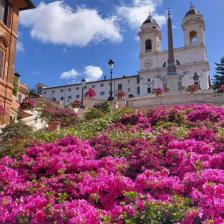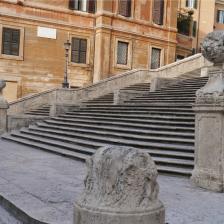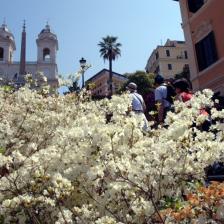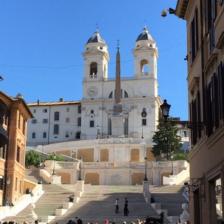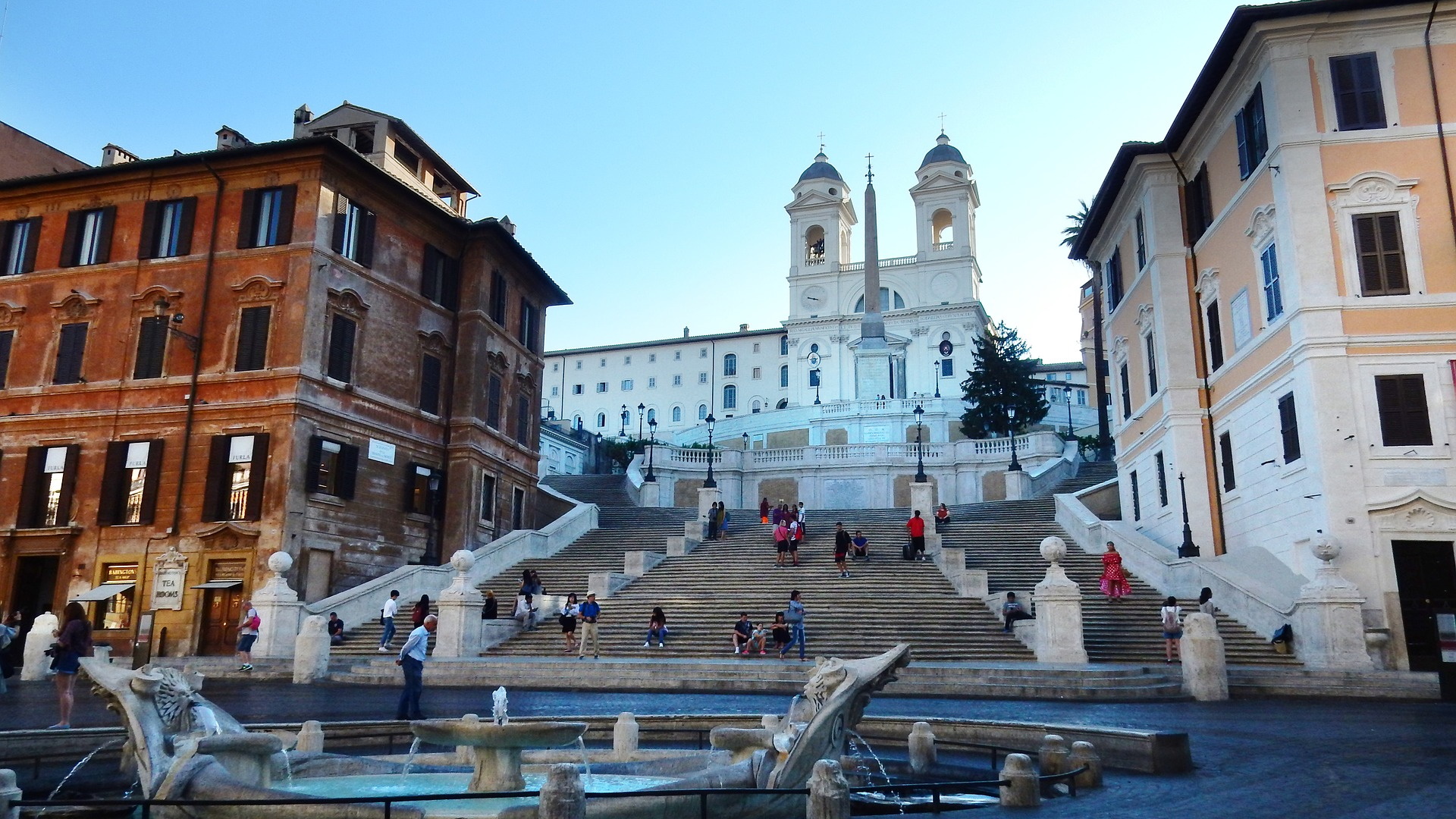
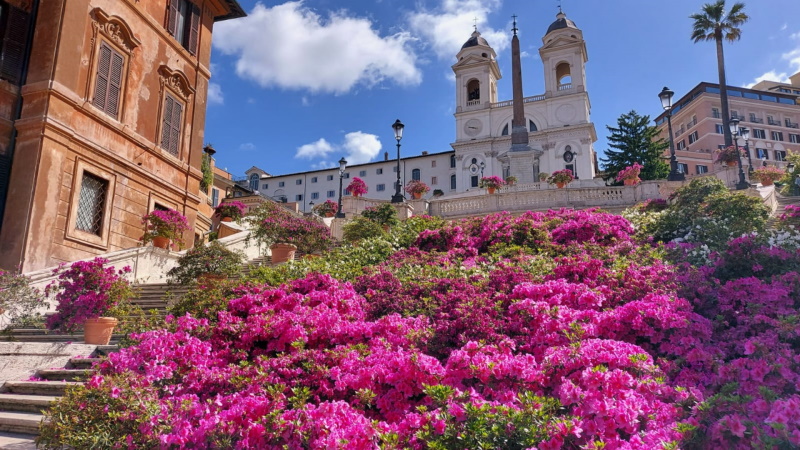
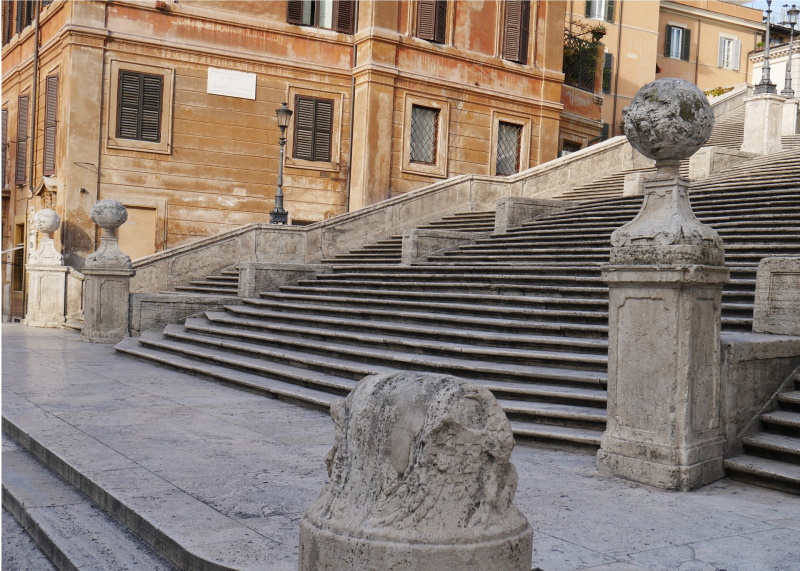
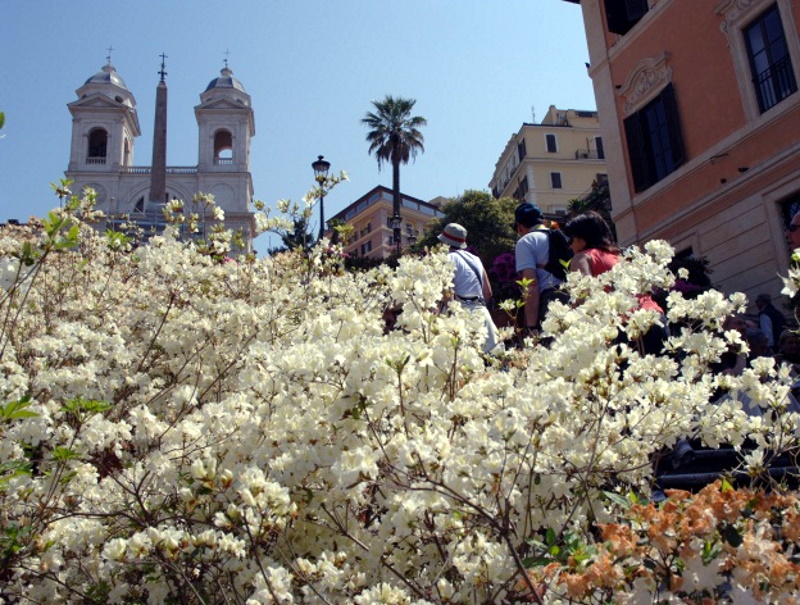
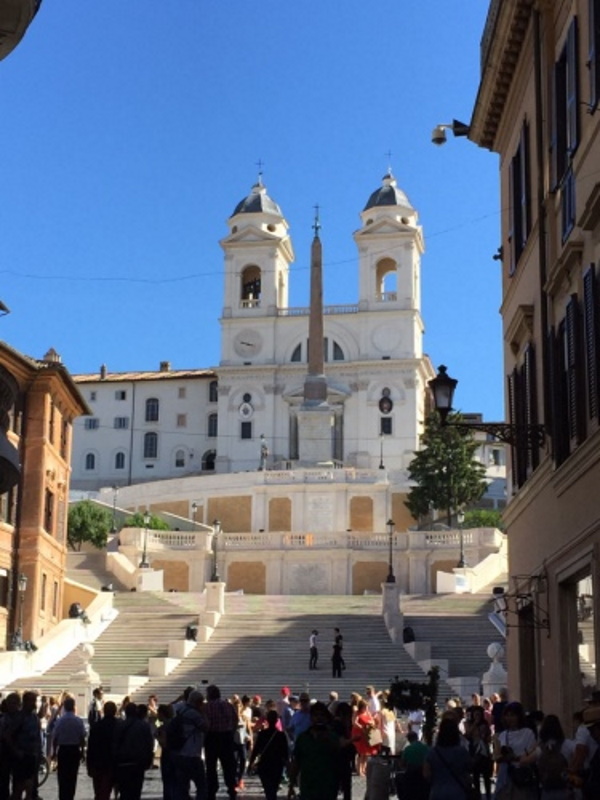
The Spanish Steps are an extraordinary masterpiece of 18th-century scenographic taste. They represent the ideal link between the Pincio hill and the underlying Piazza di Spagna, formerly separated by a bare, steep, and muddy hill. The Staircase was built, between 1723 and 1726, by the architect Francesco De Sanctis, who was commissioned by Cardinal Pierre Guérin de Tencin. It was inaugurated on the occasion of the Jubilee of 1725 by Pope Benedict XIII.
In travertine, the staircase has 11 ramps, each made up of 12 steps, which divide, wind, come together, constantly changing direction. A series of balustrades accompanies the ramps that interrupt the steep difference in height and function as a resting point and enjoyment of the landscape. The grandiose structure, which established a link between an area of the city with a strong French presence with the Spanish colony below, constitutes an architectural space that serves both for transit and as a meeting place and a pleasant stop.
In 1995, the Spanish Steps underwent a complete restoration. In 2015, thanks to the Maison Bvlgari, they underwent a new restoration which, on 22 September 2016, restored their original appearance and made them accessible again.
Approximately from mid-April to mid-May, the steps are coloured in white and lilac: this is the traditional exhibition of Capitoline azaleas that enhances the theatricality of one of the world's best-loved urban settings and that has been inaugurating the arrival of fine weather in the city since the 1950s. The collection of around 450 specimens of Rododendrum indicum (an azalea particularly well adapted to the Roman climate) on display at Trinità dei Monti is cared for by the expert gardeners of Roma Capitale and is traditionally kept during the winter months in the Antico Semenzaio di San Sisto, where other collections such as orchids and succulent plants are also kept and cared for.
Keats-Shelley House
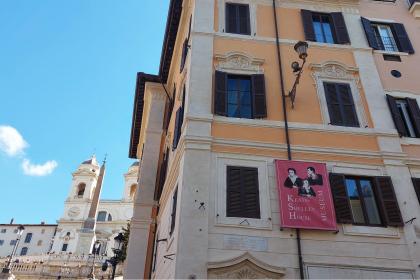
 Condividi
Condividi
Piazza di Spagna
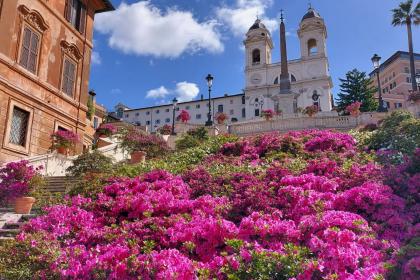
 Condividi
Condividi
The Church of the Santissima Trinità dei Monti
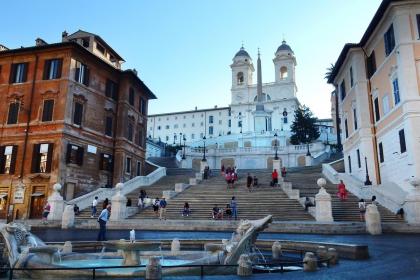
 Condividi
Condividi
Information
 Condividi
Condividi
Location
To find out about all accessibility services, visit the Rome accessible section.












































